Having a 125-gallon fish tank is presumably the next level of fishkeeping, and, boy, can it be rewarding.

However, finding a suitable 125-gallon aquarium lighting can be outright challenging. With such fish tank dimensions, the right fixture size becomes the trickiest part.
Moreover, keeping light-dependent livestock in such a big space can get complicated. However, getting the best aquarium light to fit a 125-gallon tank makes it visually appealing and benefits the tank occupants.
So, which fixture is the best lighting for a 125-gallon reef tank?
What about planted freshwater fish tanks?
Don’t fret; this aquarium lighting guide can help with that.
What to look for when buying a 125-gallon aquarium lighting?
The light spectrum coming from your fixture of choice should include all life-supporting colors. Having a red light source has been confirmed to favor fish appetite and plant growth.
Opting for dimmable aquarium lights allows you to blend colors and improve light coverage throughout the aquarium.
But what else?
In general, this is what plays a major role in choosing the best light for a 125-gallon aquarium:
When covering 72 inches of the water surface in a 125-gallon aquarium the size of the lighting unit is among your greatest concerns. The dimensions of the fixtures have to fit the tank accordingly (72″ x 18″ x 21″). The illumination area should eliminate corner shadowing and the “beam-light” effect.
Light intensity and the right lensing dictate what type of corals or plants can be grown. For different aquarium setups, different lighting choices will be appropriate. PAR plays an important role in the growth success of aquarium plants. Keeping the aquarium light spectrum on balance ensures you avoid excessive algae growth from too much light.
Below, I will mention what lights have worked for me.
Factors to consider when picking a light for a long (125 gallon) fish tank?
Having the proper lighting not only improves the aesthetics of the tank, but also aids in the growth of the tank ecosystem. It’s important to know that not all fishes or plants have the same lighting requirements. A fish-only tank lighting requirement is different from that of a reef tank.
Some plants and corals prefer high-intensity lighting, while nocturnal fish prefer subdued lighting. Before choosing an aquarium light, research the needs of your aquarium dwellers; it should mimic their natural habitat.
Most modern aquarium lighting comes with advanced controls such as timmer functionality that regulate and mimic natural light cycles.
So, opting for a lighting setup with an aquarium light timer may be a good investment if you intend to use the lighting in a community tank; that way, it’s regulated to serve the different species in the tank while maintaining the behavior and health of your tank dwellers.
Heat management is another factor to consider; some fishes are sensitive to extreme temperatures that the light might cause; however, an aquarium chiller should be able to help with that.
Consider the aquarium type before choosing a suitable light. The preferred option for reef tank lighting is an LED light, while the best-planted tank lighting is T8 and T5 fluorescent bulbs.
Here’s a detailed list explaining what you should consider when picking the right light for your 125-gallon aquarium:
Type of light
The first thing you need to decide is the type of lights your particular fish tank setup would need. Depending on the livestock and aquascape you want in your aquarium, different suitable light sources can be considered.
Generally, you can choose 3 types of aquarium lights:
- Fluorescent bulbs – I started fishkeeping a long time ago. Lighting options back then were pretty much limited.
Throughout my years of setting up tank after tank, I’ve found that fluorescent aquarium lights can be a pretty good choice for any tank setup.
The full-spectrum bulbs are novice-friendly and suitable for plants, corals, and fish alike.
I’ve also had success with 50/50 white actinic lights in my reef tanks before.The combination worked because the Actinic light is light that leans toward the blue spectrum, which is perfect for coral growth, and the white light would just make my tank pleasant for the human (my) eye.
There are also specialized fluorescent plant bulbs.These would simply provide anything a heavily planted freshwater aquarium would ever need in terms of photosynthetic activity.
The pros here are quite obvious, I think – in general, the tubes are easy to find, I could say cheap, and there are a variety of formats.
There are different “T”-diameters such as T5, T8, T12, etc.
The digits in the name stand for how many eighths of an inch the diameter corresponds to.A T5 means that the diameter is 5/8 of an inch, whereas a T8 would respond to a diameter of 1 inch.
Usually, it’s a wise move to go for the T5s instead of the T8s, as the former is more compact and lasts for as much as 20% longer.
However, this may not be the case for a 125-gallon tank…The main drawback of these lights is the constant maintenance they require.
Even with a high-end, top-of-the-notch set, you’d need to buy bulbs annually (or even more often) because a bulb loses intensity with time. For a 125 gallon tank, it may get costly as you’ll either have plenty of bulbs to change or have serious difficulties finding the 72″ long tubes.
The bulbs would also produce enough heat for you to consider a chiller, which is even more money wasted.There’s also the electricity bill.
In a long-run scenario, I honestly can’t recommend these for a 6-feet long aquarium.
- HID or High-Intensity Discharge lighting system metal halides – Metal Halide aquarium lights are a pretty genius invention, according to my limited knowledge. The idea is that when electricity passes through a container of halide salts and gas, the tube starts producing a really, really intense light.
What this means is that they are absolutely capable of satisfying our aquarium plants and corals with high lighting requirements without spending a fortune on electricity bills.
These light fixtures are also used for deep aquariums (over 24 inches) as their illumination penetrates the water mercilessly, right to the bottom of the tank.
Another really great thing about metal halides is the shimmering effect they give off.
You know, the one that mimics the natural light in the ocean.
Anyway, a reef tank with metal halide lights is becoming less and less common.A 125-gallon aquarium is a little over 20 inches deep and these rather expensive light bulbs may not fit your budget…
Disadvantages are not absent when it comes to metal halides.
Remember how I said they are super-intense?
Well, the heat they produce is also super intense.
Metal halides can become scorching hot, and a chiller is a must.
My room would become a radiator on its own when they were on.
I was not okay with the thought of them being hotter than my wife…
Like fluorescent lamps, metal halide bulbs will also need a replacement over time.Although not as often it can still be often enough to become wallet-tangible.
Despite being a popular choice among reef keepers I’ve found that under metal halides some of my corals do not show their full colors.
Another minus to having MH is the color customization, which is really important for a reef tank. - LED or Light-emitting Diode lights – With LED fixtures you can expect a fine-tuning in color customization, very low to no heat produced, unmatched product life, and functionality in the form of dimming and whatnot.
LED lights have a water penetration that is, in my opinion, better than the one a Metal Halide would provide.
LED lights are a ton brighter for the same power consumption, which has resulted in an electricity bill close to 4 times smaller than before, for me. You will not have to worry about light changes with LEDs, as they have an estimated life of 50,000 hours while working. Even if you’re nuking your aquarium with the brightest light setting for 10 hours a day, that’s still well over 12 years.
Anyway, the color rendition with LED aquarium light is a breeze.
It can be a game-changer for reef aquariums and planted tanks alike.
Personally, I like my plants and corals to be as colorful as possible.
From what I’ve observed after switching from MH to LED lighting I guarantee you, I saw colors in my corals that I never thought existed.
The growth will be the same if not better under this type of lighting. This applies to my freshwater tanks too – there’s nothing like a beautifully complimented colorful fish.
Another thing I like about LED lights is that there is no need for an aquarium chiller; I just run them and leave them as they are.
I do not need to worry about turning my home into a blazing inferno.
The cons of LEDs are their initial cost. The keyword here being initial.
In the long run, they will still save you, dare I say, thousands of dollars.
However, the initial cost has rapidly decreased over the past couple of years, because of competition and increasing demand.So it is not THAT much of a difference, in my opinion.
The other thing I would hardly consider a con, but am still obligated to mention is the PAR output.
And by that, I don’t mean they have a low PAR output, but just the opposite, it is confusingly high, even more than a metal halide.
PAR stands for Photosynthetically Active Radiation.
That’s the radiation with a waveband between 400 and 700 nanometers, which is required for photosynthesis.
It falls between ultraviolet and infrared light on the electromagnetic spectrum, with 400 being the beginning of the ultraviolet.
LED lights use “Royal Blue diodes” that are super-efficient in that 400-nanometer department.So efficient that many fishkeepers make the mistake of miscalculating PAR values and unintentionally “fry” their corals in the beginning after switching to LED lighting.
Now I know LED lights need to give off considerably lower PAR than metal halides.
So the disadvantage here is the needed time for adjustment and acclimatizing for plants and corals.
But this is pretty much where the disadvantages of LED aquarium lighting end.
Heat
Light bulbs can be deceiving in their potential to give off heat.
Have you ever made the silly mistake of trying to remove a bulb in your hallway just seconds after you turned it off?
Being my usually distracted self, I have.
They get as hot as hob plates.
Now imagine a special light bulb designed to stay on for 10 hours daily. The aquarium lighting heat would be crazy.
Metal halides give off the most heat of all three types of lighting.
This can heat your aquarium water, which can be quite an issue in the summer.
Chillers are not the cheapest of equipment either.
I get that we are all hobbyists who are willing to spend a little more on our passion, but blindly wasting money is another thing.
One of the secrets to the longevity of LED lighting is the way the fixtures manage heat.
They have a special heat sink from where the heat leaves.
This results in LED lighting having a lifespan that’s times upon times longer than the usual fluorescent or metal halide bulb.
All that without the need for aquarium chillers or fans.
Size of the light fixture & Even illumination
Getting the right aquarium light fixture size for a 125-gallon tank which measures 72″ x 18″ x 21″ can quickly become frustrating.
Finding a fixture that is 6 feet long can be very difficult indeed.
If you intend to have a FOWLR or FO aquarium (which I doubt, if you’re at the stage where you consider having a 125 gallon, but hey) one 60″ fixture MAY be enough.
In general, live rock and fish don’t care that much for specific lighting. Your only concern here would be what type of light will best complement your beautiful aquarium fish.
However, aquarium plants and corals do care. A lot.
If that is the case for you I wouldn’t recommend compromising with the size of the fixture.
It has been my experience that a couple of smaller units with a little adjustment can eliminate corner shadowing.
For example, on my 125-gallon reef tank, I use this 165W Philzon LED fixtures. You can check them out here on Amazon if you’d like.
I ended up buying those because of how efficient they are for the money and couldn’t really risk it with my reef tank.
Anyway, each unit is 15.8 inches long, so 4 would nicely cover my whole tank, with very small – 2″ – gaps between them.
This is now the case.
However, when I started my reef tank, I only got 3 of them, because of my limited budget. Yeah, 3.
The reason I went with that number was that I’ve found a really sneaky solution to make up for the 6″ gaps in between them.
The said solution worked absolutely trouble-free for me.
LED lights come with lenses that are used to concentrate the lights from the diodes.
With the lenses, the light is more of a beam and there is not much color mixing. To avoid spotlighting I slightly “modified” my lights by removing (all or some of) the lenses. This is quite important for plants, corals, even light coverage, and the overall aesthetics of your aquarium.
By removing the lenses, you will lose some intensity but get an even light spread.
LED lights are also pretty intense so this would not be an issue.
Luckily, 125 gallon aquariums are not deep by the fishkeeping standards.
Generally, any aquarium not over 24 inches deep would not need lensing, because of how intense and penetrating LED lighting can be.
After removing the lenses you should gradually increase the intensity and experiment to see how the aquarium inhabitants react.
On LED lens removal – I consider myself a medium-handy guy, but this DIY “project”, if I can call it that, can be carried out by anyone.
If you haven’t done such a thing – don’t worry, it’s super simple. All you need is a screwdriver and 20 minutes of your time.
Here’s how it works:
- Remove the screws of the lighting box, and carefully lift the top.
- Set the top aside. Inside you’ll find another plate, on which the diodes are mounted (facing downwards).
- Remove the screws from the inside plate.
- Carefully unplug each diode.
And here’s a video of some guy doing it on a similar light:
As I said in an aquarium that is 21″ inches deep it won’t make a great difference as the LED’s output will suffice either way with a little adjustment in the intensity.
This particular model comes with the basic 60º lenses, meaning the beams would provide a 60-degree angle of coverage.
The spread of the light also depends on how far the fixtures are from the surface of the water.
For my 125-gallon tank, I kept the lights at around 12″ off the water, with 85% of my lenses removed.
The ones I left on were on my middle piece, though I had some pretty comfy-looking SPS corals hanging out under the outer units.
All looked gorgeous, thrived and the growth rate and colors were more than satisfactory.
Correctly setting up lenses and mounting height is pretty intuitive, don’t stress it.
Just monitor how your corals react, that’s all.
To be fair, the only reason I now have 4 hanged on my 125 gallons is that I have a somewhat obsessive personality.
But in all honesty, I had no issues with only three units, and I was able to (effectively) grow just about any coral under them.
Controllability
Being able to avoid light shock when introducing new species into the tank is something I value quite a lot.
LED lights give you the opportunity to control intensity down to a single percentage.
You can also control the aquarium light spectrum; the white, blue, red, and green lights can be adjusted to your preferences on how you want to compliment your fish and plants’ colors.
Getting customizable aquarium lighting will allow you to regulate the activities of your tank occupants; offering a consistent cycle at the touch of a button or dial, will ensure you provide your little friends with lighting that mimics their natural habitat. Opt for options that offer vital features such as a dimmable aquarium light.
In a 125-gallon Reef tank, it’s a really helpful feature as you do not need to constantly move around corals to catch that elusive PAR reading.
Note: Just remember that PAR readings on LED lights are not at all the same as PAR with bulbs or metal halides. With LEDs you’d need way less PAR for your plants, so start slow and over the course of weeks test, test, test! Scaling with 3% to 5% intensity per week will be gradual enough to avoid bleaching.
A timer
A timer might seem less important but, it is, in my opinion, saving you a ton of anxiety.
A reliable aquarium light timer will take care of your plants for you, so to speak.
If you decide to run a couple of units the timers should be (obviously) synchronized. Running your aquarium on an automated light schedule means you can focus on other things instead of obsessing over the light intensity in your aquarium; that way your fish stays comfortable all day long and you have peace of mind.
Automated light schedules also provide your aquatic life with consistent light timing, which promotes a natural environment for them to thrive.
Some models of aquarium lighting can have very unreliable timers that go out of sync pretty quickly, defeating the purpose.
Picking a brand of aquarium lighting according to your planned tank setup?
Below I’m discussing what model of light will best suit your setup. If you’d like to read more in-depth reviews of the fixtures mentioned below, you can check my complete guide on aquarium lighting.
Naturally, I’ve only selected LED lights as the best options:
1) 125-gallon Reef tank:
For saltwater hobbyists, aquarium lights should only be seriously considered if they plan on growing coral. Live rock and fish are not pretentious about the light so, a basic model on a budget like the KZKR LED Aquarium Light would be more than enough for a FOWLR saltwater aquarium (Fish Only With Live Rock).
For a 125-gallon reef tank, however, things will be very different.
As we all know, soft and hard corals need different lighting in terms of intensity.
By the way, I think this is the part where I casually mention that the “Watt per gallon” rule is too outdated to be considered a factor.
For example, LED lights can give off much more light intensity per watts than a T5.
Anyway, for a 125-gallon tank with a standard depth of 21 inches, that houses SPS corals I can wholeheartedly recommend the 165W VIPARSPECTRA fixtures (visit the Amazon link to see some photos). These LED lights are the perfect budget option for a reef tank and are worth every penny from what I’ve seen.
It should be noted that I haven’t done a head-to-head test on all available budget equipment or anything.
It’s just that after some research I ended up buying these lights anyway, and they just kept proving themselves to me.
It may seem like a bold statement, but you can grow pretty much any aquarium coral under these LED lights and 3 units seem to provide coverage for the whole 72 inches of the tank.
The corals in my reef tanks seem to agree as well.
Try to keep the ratio of 1:3 white to blue light for a happy reef aquarium.
This ratio has worked for me, but you can experiment.
By the way, I do have LPS corals too. Gotta love placing the occasional Anchor coral here and there.
Anyhow, one disadvantage with the VIPARSPECTRA LED is that when dealing with multiple fixtures, the timers tend to get out of sync.
The time difference is not much though – a couple of minutes for every 2 to 3 months.
I don’t mind dealing with that, and it’s an insignificant inconvenience compared to what I get in return with my VIPARSPECTRA lights.
The Kessil A360X is another great LED fixture you can use for a 125 gallon reef tank.
It has a densely packed LED matrix that provides an excellent color blend and an equally amazing shimmer.
Which shouldn’t come as a surprise coming from the Chevy of aquarium lights.
With five of these babies, your corals and aquarium will come to life like never before.
When I started using the A360X in my 60-inch (152 cm) mixed coral tank, my softies and LPS immediately became more vibrant.
The best thing about these lights is that they come with locked wavelengths, so there’s not much you can mess up.
Unfortunately, you’ll have to pay a premium price if you want to experience all of the benefits they provide.
Anyway, if you want to see more options, I recommend checking my guide on premium LED lights for coral growth. There, I review more high-end LED lighting fixtures that won’t leave you disappointed.
Visit the link and check out the premium suggestions I make for reef aquariums with a depth of 21 inches.
- Lightly planted tank:Before I turned my 125-gallon freshwater tank into a mini-jungle, I started off normal – I got some driftwood, rock work, and a few aquatic plants here and there. As a beginner, I was mainly using easy aquarium plants such as Java Fern and the like.
I gradually added more and more plants and was really fulfilled by how they grew, occupying the whole aquarium eventually.
Back then – starting on a budget – I had to do some overwhelmingly deep reading on the lights I could get that would fit my plants’ needs as well as my wallet.
Fast-forward a whole year after my purchase of choice and I was still using this. It has thousands of positive reviews.
Coming at under $60 per unit, I was able to mount 2 of these over my 125-gallon aquarium (I got 1 x 46″ + 1 x 20″ for as little as $95 total).
My observations – it provides really good value for its price, and even though it’s not really bright, it produces more than enough light for low-maintenance aquatic plants. I’m also guessing that many of you plan on having Cichlids or Oscars in a fish tank of these dimensions.
All I can say is that this light is quite literally perfect for such a setup as it brings out nice colors off of your fish.
- Heavily planted 125-gallon tank: When talking about a heavily planted, forest-like aquarium we can’t go around scaling things up a little. Now, I hope I don’t get lynched for saying this, but I’ve found the Current USA Satellite Plus PRO can really be amazing when used as an LED lighting for 125-gallon planted aquarium (click this link to check them out on Amazon or click here to compare prices at Chewy).
It gives enormous amounts of light so it manages to meet the insane demands of my aquatic jungle.
For a 125-gallon, heavily planted tank, two 34.8-inch units would provide enough light coverage.
If you do the math you’ll see that getting three 22.8-inch fixtures will waste you around 120 bucks compared to getting two 34.8-inch ones for pretty much the same coverage.
By getting 2 fixtures of 36″ – 48″ I made sure that there would be no shadowing as they are 34.8 inches long each, leaving almost no gaps between the fixtures.
Here is probably the place to mention that a 125-gallon tank has a width of 18.5 inches.
If you plan on planting it back to front you may want to add secondary units to make up for the shadowing in the back and front bottom corners.
It will not be actual shadowing per se, but the plants at the parameter would get less light.
Note that you should only add parallel lighting fixtures if you want to cover the bottom of the tank with high-demand plants from back to front (which is rarely the case in practice).
Anyway, this aquarium lighting system does fall a little over on the pricey side, but it is well worth it, and I highly doubt anyone would want to compromise with their underwater garden.
It has a ton of built-in lighting simulations such as stormy weather, cloudy sky, moon and dusk, and even a built-in timer.
The Current USA LED lights easily handle my aquatic plants that require medium to high light, and the growth and colors really speak for themselves.
To be honest, I did expect less, given how expensive lighting can get but the results I am having with my *ahem* HEAVILY planted tank really proved me wrong, thankfully.
I think it’s safe to say this light is a top performer for its price range when it comes to healthy, thriving aquarium plants.
- “High-Tech” tank”: High-tech aquariums require a lot of intense, quality light among other sophisticated plant support.
I am openly admitting that I’ve only kept a couple of those systems.
This is more than most, but some will say that it may not be enough.
However, I am confident that my own personal experience, combined with the knowledge I gained during my research gives credibility to my claims.
Therefore, I would not really recommend something that I don’t believe in.
By “believe in” I mean I thoroughly researched, tested, or recommended by another fishkeeper with hands-on experience.
So, based on all of these, my friends and I came to the conclusion that the Fluval Plant 3.0 (also known as Fluval Plant Spectrum LED) is just about as good as it gets for a reasonable price. It’s a really powerful set of LED lights that were designed for high-tech planted tanks.
As expected, Fluval Plant Spectrum 3.0 has multiple lighting modes, simulating anything from dusk to dawn.
It also comes with 120º lenses, eliminating any beam light effect (again, perfect for plants that require lots of light).
The wide lenses eliminate the need for installing parallel units because this LED lighting fixture is really bright anyway.
Two 36″ to 48″ units will be enough to cover the whole length and width of your 125-gallon aquarium.
Anyhow, another option here would be the Finnex Planted+ 24/7. This product pretty much shares the #1 spot with the Fluval Plant 3.0 as they’re both crafted with the same purpose – illuminating demanding planted tanks.
The Finnex has a well-researched background, which clearly becomes evident when you see how aquatic plants THRIVE under it.
The scientific approach of the Finnex manufacturers allowed them to implement just the right wavelength (distribution of the portions of blue, red, green, and white light) for optimal plant growth.
Note that this is more important than the PAR output.
Also, know that the Finnex Planted+ 24/7 CRV version uses true Red LED diodes in the 660 nanometers wavelength range, which means that it will likely have the BEST impact on your aquarium plants. However, it is also the priciest from the Finnex Planted+ Series.
Anyway, both of these lighting fixtures will get your high-tech aquarium where you want it to be. You’ll even be able to grow carpeting aquarium grass such as Dwarf Hairgrass.
Author’s note: Between the Finnex and the Fluval, I would personally choose the Fluval. Though they both grow fantastic aquarium plants, the Fluval has an IP67 waterproof rating. This means that water evaporation will not shorten its expected life. The Fluval also comes with a 3-Year Warranty, whereas the Finnex has a 6-month one.Anyhow, there are 24″, 36″, 48″ sized fixtures from both brands, so for a 125-gallon tank you should get two of the 36-inch ones, as with the current pricing this setup will save you some $$$!
The units can be extended, but this only gives flexibility in positioning, you will still be left with gaps if you get the smaller fixtures.
A little disclaimer on the Fluval: This new 3.0 version gives off a little less PAR than its 2.0 cousin.
This results from LED lighting manufacturers’ efforts to become better at employing more PUR (Photosynthesis Usable Radiation) per PAR.
This means the spectrum output is continuously improving to match your pants’ needs.
You can learn more about PAR and PUR in my complete guide, which I linked to a couple of paragraphs earlier.
And finally, if you want a dedicated 72-inch long LED fixture for your 125-gallon tank I can recommend the tried and tested Phlizon 165W Dimmable Full Spectrum Aquarium LED. This light is the brightest of the budget ones and has a decent spectrum to support aquarium plants.
For a heavily planted tank and carpeting plants, I recommend getting 2 72-inch fixtures and lining them next to each other.
Author’s note: Keep in mind that the 72-inch long Phlizon LED fixture may bow a little in the middle. That should not worry you, but no one would stop you if you find a way to give it additional support.
Honorable mentions
Okay, but what if your budget was a little looser?
There are high-end quality lights out there that have impressive stats and features, no doubt.
If you’re the kind of hobbyist who has a little more to spare (I’m looking at you, reef aquarium keepers), what would be a good reputable brand that has the right size to fit your 125-gallon fish tank?
Many old-school aquarists would just worship the “BML lights” when a planted tank was in question.
BML used to be a brand that would manufacture aquarium-suitable lights that were as efficient as they were pricey.
However, they decided to rebrand, specializing in horticulture lights, dropping off the aquarium alternatives.
They are now known as Fluence Bioengineering. Still, many advocate using their non-aquarium lights for fully planted tanks.
I have not tried their new products, but as far as I know, aquarium-suitable lights are often more durable when exposed to evaporation while some, like the Fluval Plant 3.0, are fully waterproof.
Anyway, Fluence does make 72″ fixtures, specially designed for plant care, so there’s that.
Another brand I think deserves mentioning is Kessil. They have some pretty neat LED aquarium lights, with a lot of specific controls which combined with their output potential, are earning the unconditional love of the more advanced reef aquarists.
Though you can’t go wrong with Kessil and their high PAR LED aquarium light solutions, If you want to cover your 125-gallon reef tank with these, be prepared to leave at least $700 on the table.
My Final Words
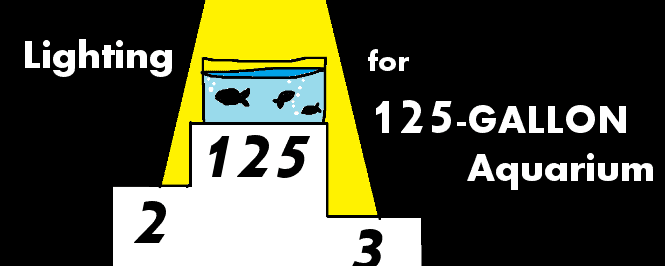
Size matters for aquarium success, but so does your plan and setup.
Properly lighting up an aquarium that is 72″ long is more of a special case, but not impossible to overcome.
If you need further guidance on your 125-gallon tank, just leave me a comment and I will happily reply.
Speaking of which, it makes me really happy that more and more people are leaning towards bigger tanks.
Having one of those can be a great delight.
There’s nothing that can compare to growing your own plants or a reef coral colony in a huge aquarium.

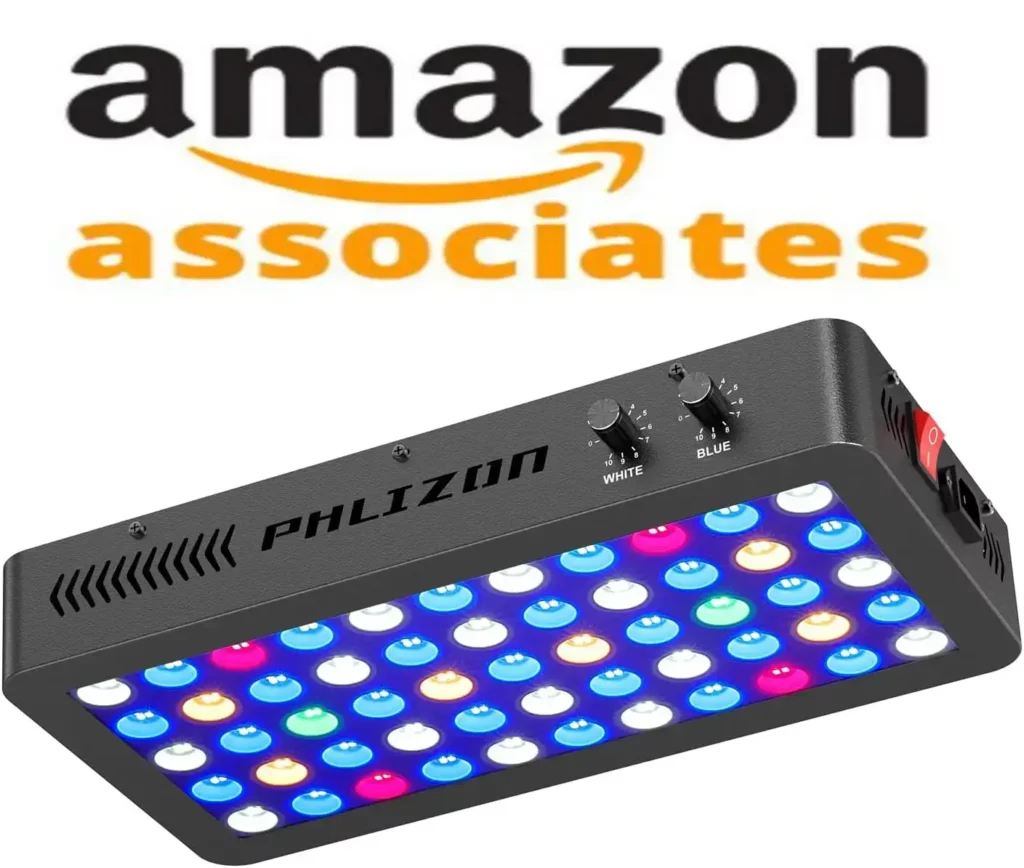
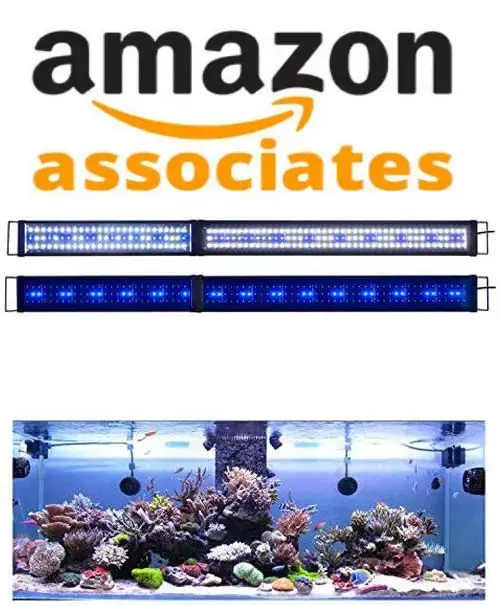
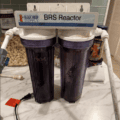
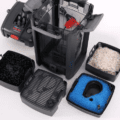
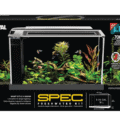
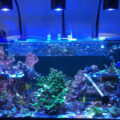
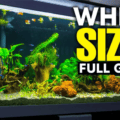

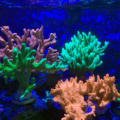
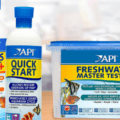
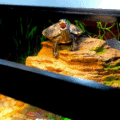
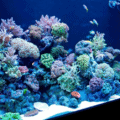
Currently setting up a 125 Gallon. Planning on planting it moderately and was looking into Dual 36-48inch Fluval Aquasky, or would the 3.0 be better?
Hello,
The 3.0 is better and will give you more planting options (you could have your tank moderately planted, but with more demanding plants).
Good luck,
Momchil
Momchil – Thanks very much for your posting on aquarium lights for 125 gallon tanks. I was very impressed with the work you put into it and you answered many of the questions that I had about setting up a planted tank. I’m waffling between a 125 low tank (20″ tall) and a 135 tank (24″ tall). I’m a little concerned that it will be tough to do a decent planted tank with the 135 tank because of the extra 4″ in height. Am I over thinking this? Do you have any additional guidance or thoughts on lighting a 135 gallon tank? Thanks so much for your time! Jim
Hi Jim,
You’re not overthinking this – a 20-inch deep tank will give you much more options for aquascape, especially if the tank is long. If I were you I would get the shallower tank if I wanted to increase my chances of having a nicely planted tank without spending a ton on lighting.
Momchil
Hello,
Do you know if the Finnex light for a 125gallon (2-36” lights) can be suspended above the tank? I really don’t want feet for my light.
I own a pair of Twinstars for my 120g and they are super pricey.
Thanks!
Hi Terri,
I don’t see why it could not happen but you’ll need to do some modifications on your own. I don’t think the original design itself allows it.
Do share if you end up doing it.
Momchil
Great article. Thank you. I’m growing crinum Natans, which I got from Dustin’s Fishtanks, in my 125. Dustin said they do best under high light. At the suggestion of aquarium coop, I bought 4 36 inch fluval Plant 3.0 fixtures. This is what was suggested for medium to high light. I have all 4 fixtures set on the default planted setting and I feel like I’m cooking my plants. Do you think that 4 of these lights could be too much? Should I turn them down or just run 2 of the 4? Thank you. Any advice will be appreciated.
Hi, Brian.
The Fluval Plant 3.0 is one of the very best LED lights for growing aquarium plants. It has an effective width coverage of at least 24″ thanks to the 120-degree lenses it comes with. A regularly-shaped 125-gallon aquarium has 18 inches of width. Placing 2 fixtures next to each other just to “make up” for a small space of width (not needed anyway) will likely result in scorching your live plants across the length of the aquarium.
Usually, you’ll want to place 2 fixtures next to each other if you have a really wide aquarium (like how it is with most “reef” tanks) and if the lighting fixtures you use come with a highly concentrated beam of, say, a 60-degree lens.
Hope this helps.
Thanks for this answer. I’m getting ready to start a planted 125, upgrading from a 75. I’ve been pulling my hair out trying to figure out what lighting to use. Your answer here has solidified my decision. 2 36″ Fluvals it is!
Glad I could help!
Happy aquarium keeping!
Hello, thank you for the article(s) I also finished the “full guide to aquarium lighting” which contains ALOT of great information!.. I feel much more comfortable selecting new lighting for my 125 and it answers several problems I’m seeing in a few of my other tanks. I just wanted to let others reading this comment know to read the other article and between the 2 will answer any and all your questions! (but still, say Thanks in the comments!) Thanks again!
Hi John!
Comments like this make my day and give me the fuel to do what I do.
Really, appreaciate it!
Thanks to you and happy fish keeping and aquarium plant growing!
How many lumens for a 210 fish only tank?
Hi, I think a 72″ Beamswork EA Full-spectrum will do the job.
Good luck.
Thank you for the article.
I have a 125 Gallon Aquarium and I’m trying to grow Anubias. I’m trying to reach 1-2 Watts per gallon.
Two 36″ Satellite lights would be 50 Watts of light only totaling 0.4 watts per gallon which is far from the recommended 1-2 Watts per gallon.
Am I doing my math wrong or perhaps going about this in an entirely incorrect way?
Thank you.
Hi zac,
2×50 Watts divided by 125 gallons equals 0.8 Watts per gallon.
However, the Watt-per-gallon rule is super outdated and is non-applicable to LED aquarium lighting, because nowadays diodes have enormous PAR output per Watt used.
This was a very old rule that was popularized when people were only using non-controllable bulbs that were way less-energy efficient than LEDs (T5s, metal halides, etc.).
In short: You’ll be more than satisfied with 2x the Satellites. 🙂
Hope this helps.
Happy fishkeeping!
I have a 125 gallon planted aquarium that needs help. I would be very content with basic/low light/ low maintenance plants but would like your opinion as to what lighting to use. I have two 36 inch compact fluorescent fixtures but one of my bulbs just burned out. I purchased inexpensive 6,000-6,500 full spectrum bulbs but am ready for an upgrade now. One of my problems was my water softener using standard salt. I didn’t have problems with my African Cichlids but with tropicals and live plants that is a different story. I have stopped using my water softener to eliminate salt in the water. I have water from an aquafer and am wanting your advice if tropicals and plants can thrive with this water now that I no longer soften my water. I would like to not have to use CO2 and use plants that can be content with basic ferts if possible. Please advise
Hi Rob,
Truth is that if the tropical fish are not specifically wild-caught they were probably bred and raised in hard-ish water by the fish pet store people. If you still haven’t picked the tropical fish from your pet store, then kindly ask the staff to tell you the water parameters of their fish tanks to confirm this.
Live plants that do well in hard-ish water are the easier ones such as Java Fern, Anubias, Java Moss, Swords, Crypts, most floating plants, so these fit your description…
Nonetheless, you should test the unsoftened water and see if it’s not too hard (dH below 20) for any of these fish and plants.
Hope this helps!
Did you mean GH of below 20? I also would like your opinion of what light fixtures I can use for my 125 with trying to go with easier plants. I would like to upgrade instead of buying new compact fluorescent bulbs for my fixtures. I have bought tropicals over the past few years with only a few being happy with my soft water. I’m hoping that with the salt no longer in the water that the tropicals will be more successful. Without planning on using CO2, what ferts and lighting would you recommend? I am using a 50/50 mixture of black sand and eco complete at this point. What are your thoughts/recommendations on my substrate also?
Thanks
Hi, again Rob,
No, I meant dH (degree of General Hardness). GH can be measured in either dH or ppm (parts per million) so there’s that.
Anyway, for easy plants in a 125-gallon aquarium, I can recommend the NICREW ClassicLED (as I did in the article) 2 fixtures x 30-36″, which will leave a 4″ gap between the fixtures (2 gaps on the side and 1 in the middle, assuming your aquarium is 72 inches long)… This will be more than enough reach for low-light plants. You can do 2 x 36-48″ for absolute full coverage, but that’s only if you’d like to have every inch of the tank covered in live plants.
As I mentioned above soft water is only necessary if your fish are wild-caught. It’s usually more dangerous for their health to transition from hard to soft, rather than from soft to hard water.
Black sand and Eco complete are both inert substrates (I have an article on substrates, type “substrates” in the search bar to find it), so I would recommend that you at least dose Seachem Flourish Tabs. These in combination with the NICREWs would be enough to support a pretty decent growth in low-requirement live plants.
Was I of help? I will be here if you have more questions.
Ok…so I finally had my water tested/checked at a LFS/Petsmart. The results they gave me is as follows per the test strips they used: they measured total hardness at the higher end of the 150 ppm block, the total alkalinity at the upper end of the 180 ppm block, and the pH at the upper end of the 7.8 block. I asked them how it compares to the water in their fish tanks. They tested their water and the results were slightly lower than my water results and they said that my water is now good for tropical fish. I also ordered one of the 36-?? inch Nicrew fixtures to try one out. If the plants on that half of the tank improve then I’ll order a second one for the other side. I have been using the Flourish tabs but want you opinion how many I should be using in my standard 125 gallon tank and how often to replenish them. Also let me know what you think of the water test/results they gave me. Thanks again for your help.
Hello, really interesting articles so much valuable detail. Are the lighting units powered by transformers or direct AC supply. We use 240v in Australia and wondering if this is a problem. I am setting up a 60″X 24″ X 24″ and thinking of 2 units to get full length coverage but reading on your lens manipulation that might be another less expensive option. What would you suggest. Tank will be heavy plant and light on fish numbers. .
Thanks for your time and the articles are great.
Regards, Dirk
Hi, Dirk
Thank you for the kind words, it’s always nice to see someone appreciating my work. : )
I believe the units listed here are powered by direct AC supply. However, it makes perfect sense that in AU (if offered in your local Amazon or another marketplace) they’d use 240V.
I wouldn’t count solely on lens manipulation tbh. Yes, it definitely delivers, but frankly, that may be in case you are after some super high light demanding plants in between the gaps (in the example I give it’s about corals).
The Current USA Satellite PRO Plus has a 120 degrees light spread of the diodes anyway.
I can see why lighting a 60″ tank can be a tricky decision.
If you get 2x Satellites (22.8 inches long) You’ll have a total physical length of the fixtures of 45.6, which leaves you with potentially 3 gaps (for maximum exposure) – 2 at the end and one in between the fixtures. So 60″-45.6″ = 14.4″ divided by the number of gaps (3) you get 4.8 inches per gap.
By getting the Satellite 46.8-inch fixture you’ll be left with only 2 gaps of ~6.5″ each. Which is considerably more than 4.8″ and you may get less light/shading at the corners of your aquarium. If you plan to take maximum advantage of the present space Go for the 2 x 22.8 setup IMO. If you are okay with compromising plant growth in the corners, get the 46.8″ fixture.
This is all considering that the Satellites have a 120-degree beam spread by default.
Hope this helps!
Hiya,
Firstly.. thank you for writing up these articles. Ive learned more in the last hour than i did in the previous 5!! So much conflicting info on the web.
Ive got a 90 x 26 x 30 inches (deep) aquarium arriving. Ill be happy to grow low light plants anubis / crypts / moss etc but am struggling to find a light solution. In the uk ive yet to be able to find the finnex ray 2 for sale.
Aquarium will have a hood and so i’ll need to fit the lights within it.
If i went with 4 x fluval plant 3.0 @ 46w each (3,000 lumens) and 91-122cm long, do you think there would be sufficent light penetration down 30″ for the plants?
Thanks once again 🙂
Hi Mike,
The Fluval Plant 3.0 is pretty solid in my opinion. Another option would be the Finnex Planted+ 24/7 if that’s available to you. I usually recommend these for high-light medium-depth planted tanks (read 55-gallon aquarium that’s 21″ deep). You’re only listing low-light plants and I think that if you keep it strictly that way you will definitely pull it off. Ramp up the “pink” and all the varieties of white to the max and experiment with the blue by starting at 80%. If you notice algae, lower the blue a notch. Blue has the most water penetration from the spectrum, but it’s also employed by algae. The Fluval is IP67 certified, which means it’s waterproof and water evaporations won’t do harm so a glass lid is not necessary.
If I understood correctly you plan to leave around 6-inch gaps between the fixtures, right? 6 inches from the left, then 36 inches of actual body length of the fixture, 6 inches in between, another 36 inches of actual body length, and another 6-inch gap on the right = 90 inches total, correct? Given that the Fluval has a 120 degrees spread of the lens this should not really be a problem, perhaps only the far corners of the tank will be slightly shadowed.
On another note, Lumens do not really play a role in the equation when it comes to plant growth. I’m currently in the process of publishing a post for LED lighting, specifically dedicated to aquatic plants, so you might as well wait until tomorrow to read the full thing.
Anyway, hope that helped!
Looking forward to hearing from you 🙂